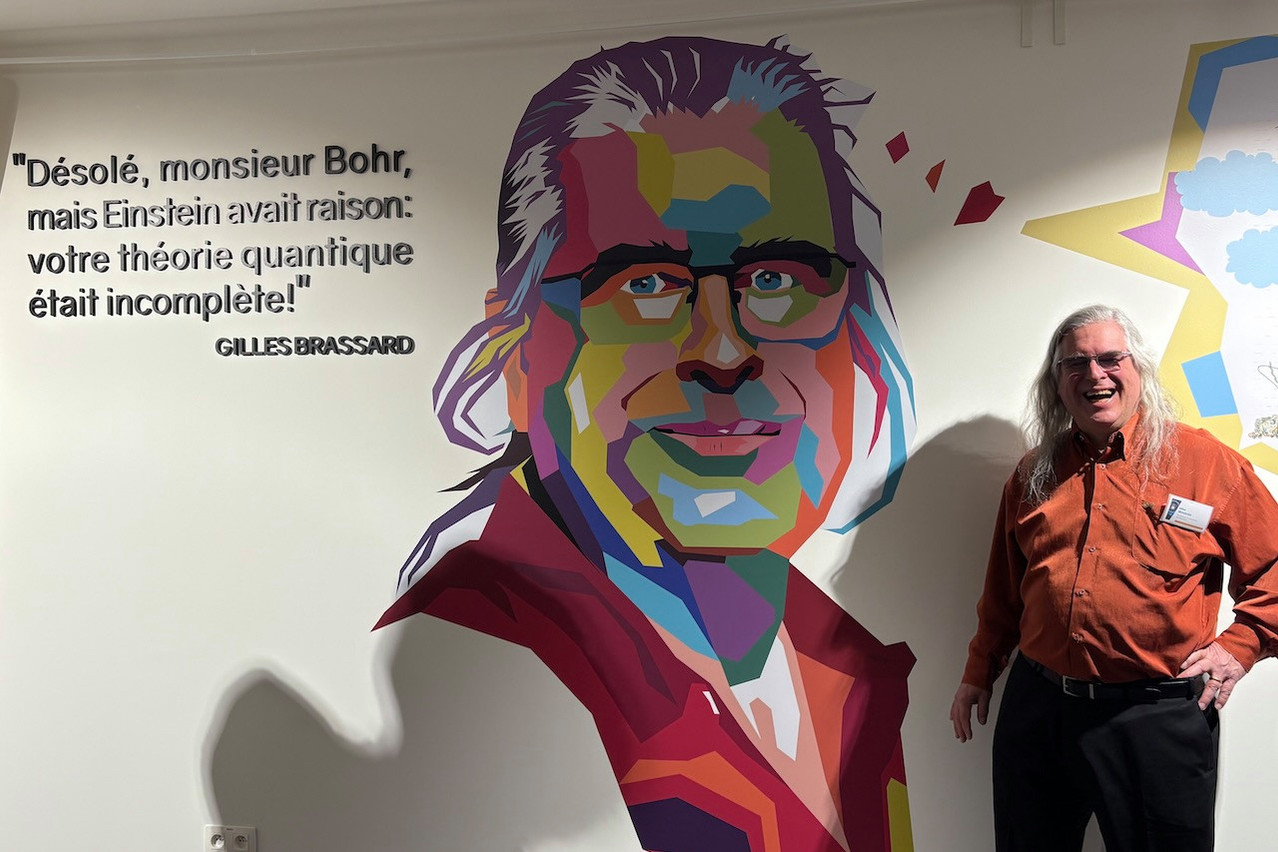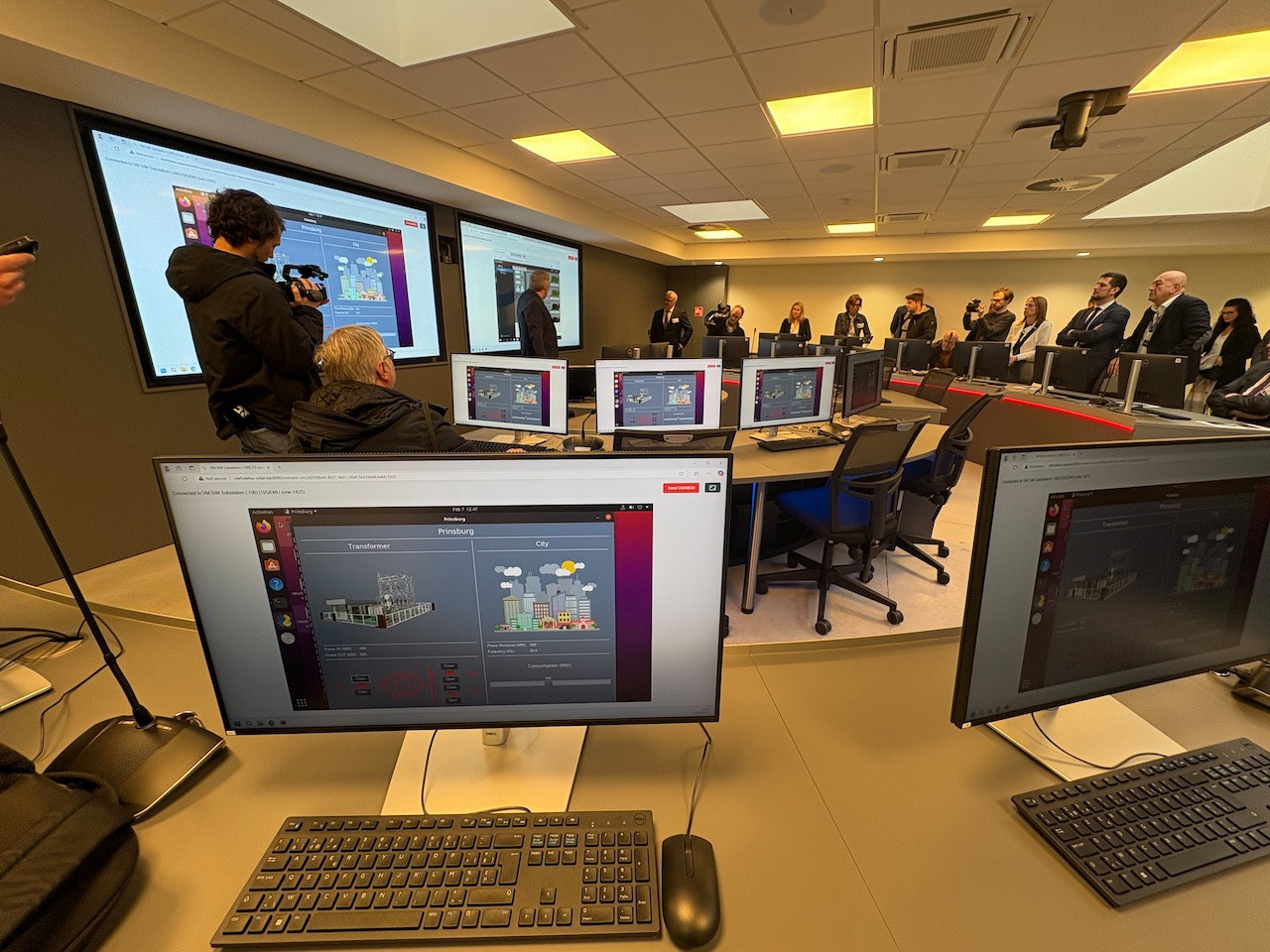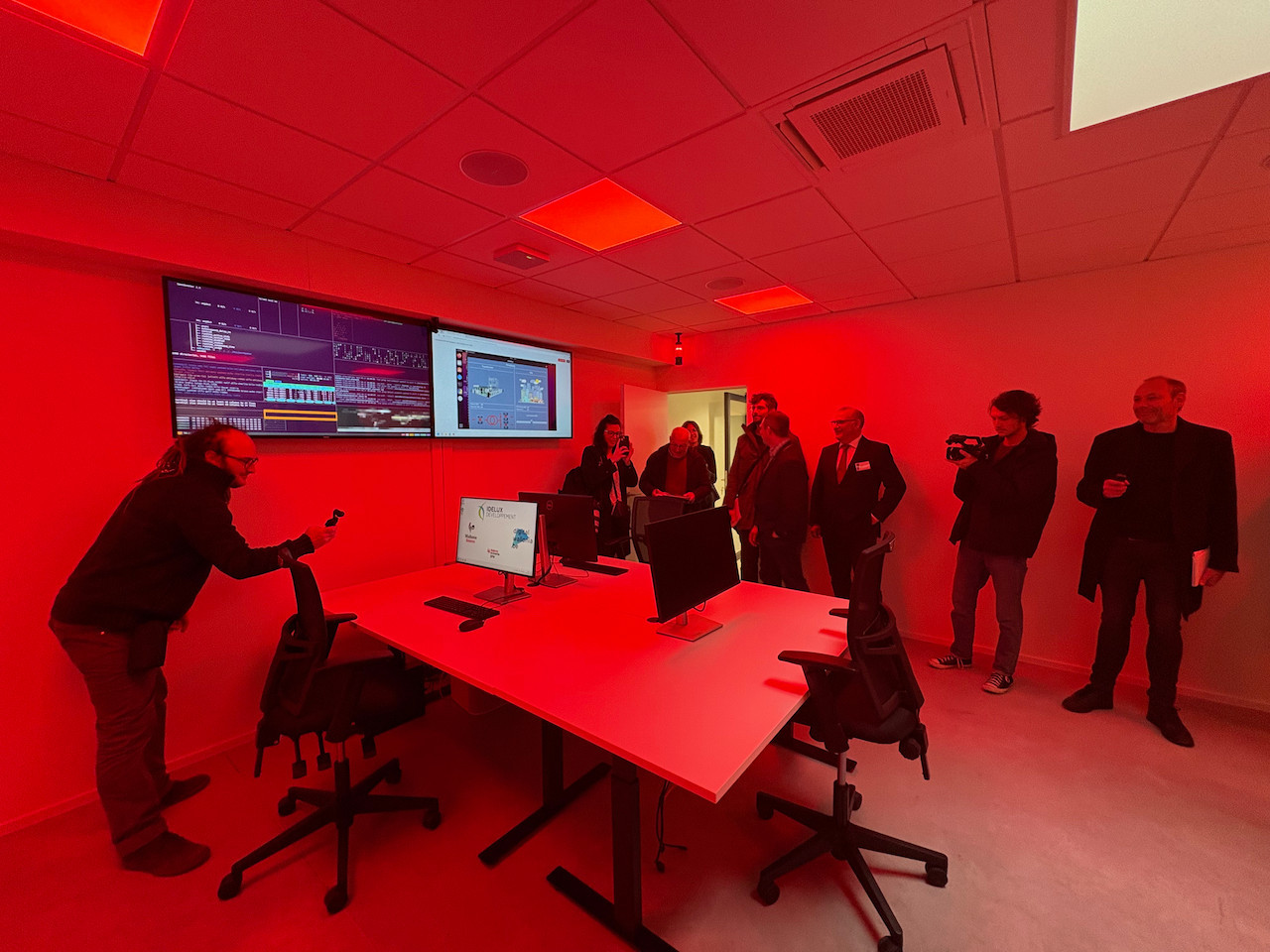“Throw everything to do with Starlink in the bin! Throw away your Tesla! And anything to do with Elon Musk!”
The official ceremony was drawing to a close in the auditorium of the Euro Space Center, near Brussels, when Gilbert Brassard surprised the organisers by taking to the stage again. His step was hesitant, but his mind was sharp and his words dagger-sharp.
“I feel I’ve been too short,” explained the father of quantum cryptography.
“We are lucky to have the European Space Agency nearby. Quantum cryptography requires an infrastructure that is not yet in place, a two-tier infrastructure. A terrestrial level linking the nodes together and, for continental distances, a spatial level enabling transmission to smaller structures.”
“One of the nodes capable of receiving these quantum messages will be the ESA node here. We can even imagine the telescope that will receive these communications being installed on the roof of Nexova or even Idelux. It could be the main node for Wallonia, Belgium, Luxembourg and even the whole of the Benelux region.”
During his first speech, the man who entered the University of Montreal at the age of 13 and obtained a doctorate in theoretical computer science at Cornell University in the US, had already delivered an unusual political message. In front of an ecstatic amphitheatre.
Canada and Europe must unite against the threat of this growing imperialism, which is threatening the integrity of world democracy in a way we have never seen before.
“The world geopolitical situation has been shaken and may be shaken again for more than four years... But the main message I would like to convey to you is the crucial importance, for the future of democracy, of Europe standing together with Canada. You are probably all aware that the man whose name, like [Harry Potter villain] Voldemort, cannot be pronounced, intends to annex the Panama Canal and Greenland by military force, and Canada by economic means. It is essential that Canada and Europe unite in the face of the threat of this growing imperialism, which is jeopardising the integrity of world democracy in a way that has never been seen before.”
These were the words of the researcher, winner of a dozen leading international prizes, including the prestigious Wolf Prize.
“One of the fundamental aspects of protecting Europe and Canada is to guarantee the confidentiality of communications in the face of possible terrorist attacks from countries that were once allies. These attacks could target electricity, water or space infrastructures... Unfortunately, the method used over the last forty years--that little padlock that appears in your browser to make you believe that your communications are secure when in fact they are not--is based on assumptions that seemed reasonable at the time.”
“Today, we know that the quantum computer will have enough power to completely destroy this security. And the situation is even more serious than you can imagine. Right now, enemy entities are already storing encrypted communications and data, waiting for the quantum computer to be operational so they can find out everything about us.”
Brassard, who has been compared in University of Montreal blog post to Cassandra--the Greek mythological figure who was able to predict the future but was cursed so that nobody would ever believe her prophecies--continued. “The only thing we can do, and the essential thing, is to save the future! Quantum cryptography, which I had the good fortune to invent with Charlie Bennett over 40 years ago, even before the quantum threat was revealed, is our only solution. Incidentally, it was in 1994--ten years after our invention--that Peter Shor discovered how to use a quantum computer to break conventional encryption algorithms.”
Since then, the two men have continued to develop their respective technologies, from completely different perspectives.
“Today, my presence here is a unique opportunity to make this region a centre, indeed one of the key centres, for protecting the infrastructures of the future. This laboratory marks the starting point for the establishment of essential nodes that will ensure the security first of all of Wallonia, and then of Belgium, Luxembourg and the Benelux countries.” Brassard was speaking in the presence of a number of Luxembourg personalities, including Pascal Rogiest, CEO of Clarence, and Laurent Probst, partner at PwC.
On Friday afternoon, in the heart of Wallonia and in the presence of minister-president Adrien Dolimont, the area behind the famous Euro Space Center continued its development as a cybersecurity cluster with the addition of two new infrastructures: a cyber range with a crisis simulator and a quantum cryptography laboratory. Both are available free of charge to institutions and businesses to support their research work or train their teams to deal with the growing cyber security threats.
The concept of the former is well known in Luxembourg, where the Luxembourg army has acquired a Cyber Range in 2021. This is a room resembling the rocket launch control centres of yesteryear, equipped with large screens and workstations arranged in a half-moon shape. Nexova, which has itself invested €20m in a site a hundred metres away, mainly for institutional customers, is able to ‘replicate’ various infrastructures--from water and energy suppliers to hospitals--in order to identify their points of vulnerability to cyber threats. The aim is to enable teams to practise putting processes and protocols in place so that they know how to react in the event of an attack.
A small adjacent room, designed to simulate crisis situations, takes the experience even further. It is capable of panicking any team, including seasoned experts, to put them under intense pressure and make them feel the stress of a real attack. The aim is to ensure that they are better prepared when such an unavoidable threat actually occurs.
The CEO of Nexova Cyber, Emmanuel Adant, also announced the imminent launch of a “quantum shield” which would also concern Luxembourg and in particular the financial centre, without going into further technical details.
On the lower floor, Thales supplied the equipment for the quantum cryptography laboratory, a small room in which researchers specialising in quantum and post-quantum cryptology can test their solutions under optimum conditions, without any risk of interference.
It is precisely in this laboratory that Brassard’s “baby,” the BB84 protocol, one of the first quantum key distribution protocols, will come into play. How can this be explained simply? A laser emits photons, particles of light, on straight or diagonal lines. If someone tries to intercept these photons, their state changes instantaneously, making it possible to detect any attempt at espionage and to abandon these compromised keys before any information is exchanged. In theory, this system makes all communication inviolable. It now needs to be physically demonstrated to guarantee the security of future communications.
“You know,” Brassard said mischievously as an aside, while expressing his pride at having been chosen to embody this European and global destiny, “in Canada, if you give someone’s name to a building and that person has died, you have to add a hyphen between their first and last names. Can I ask you, if anything ever happens to me, to make sure there’s a hyphen?”
This article was originally published in .





